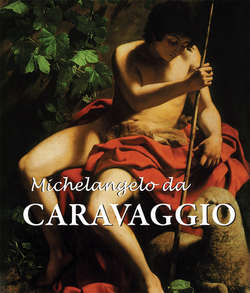Читать книгу Michelangelo da Caravaggio - Félix Witting - Страница 4
На сайте Литреса книга снята с продажи.
His Fate
The Early Years and Departure for Rome
Venice
ОглавлениеAfter such preparation, it was logical that Caravaggio would be fascinated by the Venetian artists. The glory of Giorgione and Titian, who had only recently died, was still radiant; Veronese’s modelling and the vibrant colours of Paris Bordone certainly attracted Caravaggio, but it was above all Tintoretto, with his striking artistic talent, who fascinated the young artist. Unger described the great Venetian artist, with respect to Caravaggio, in the following way: “Tintoretto, faced with the nature of man and his natural tendency to violence, depicts this characteristic somewhat simplistically without giving the opportunity to analyse the origin of these violent impulses”.[17]
Eerie, threatening nights, where lightning streaks the sky and the smoky flames of blazing bonfires leap up to the sky, create a strong contrast to whole parts of his paintings which are in the dark, whereas others are spookily illuminated by greenish, glaring lights.[18]
The intense colouring, which had attracted Caravaggio so much to the work of Gaudenzio Ferrari and his successors, dazzled him in Tintoretto’s œuvre. He applied what he found there in a decided manner to the cycle of paintings of Saint Matthew for the Church of San Luigi dei Francesi, producing an even more striking effect.
Boy Bitten by a Lizard, 1593.
Oil on canvas, 65.8 × 52.3 cm.
Longhi Collection, Florence.
Boy Peeling Fruit (copy), c. 1592–1593.
Oil on canvas, 75.5 × 64.4 cm.
Private collection, Rome.
But it was Tintoretto’s ability to synthesise multiple expressions within a single painting, thus bringing out the innermost feelings of the characters, which was very much the unifying element in his work that Caravaggio admiringly sought to adopt. The Milanese artist’s talent for three-dimensional modelling never tempted him, however, into the exciting narrative elements that the Venetian artist had so remarkably mastered.
We may assume that, after leaving the Lombard capital, Caravaggio was in Venice around 1585. Although we cannot know for certain when he arrived in the city, there is no doubt that the death of his mother around that time would have strengthened his resolve to leave Milan. The artistic influence that Milan had on him was later assessed as central to his subsequent artistic development.[19] According to Baglione, Federigo Zucchero made a comment about Caravaggio’s work to which we owe the certain indication that, in reality, it was Giorgio Barbarelli, known as Giorgione, under whose spell the young artist fell. “I cannot look at them without seeing the influence of Giorgione”, commented the well-known mannerist of the Roman School about Caravaggio’s paintings in San Luigi dei Francesi,[20] a judgement that did not really fit the works criticised, as they had already overcome the Venetian influence and displayed Caravaggio’s own characteristic style. In Roman artists’ circles at that time it was believed that Caravaggio had close links to Venice. From this period, the young and susceptible artist indulged in the magic of Venetian painting, which was then at its peak. The painters of the time most admired by Caravaggio were attempting to characterise their subjects better by creating works of large dimensions on a restrained background. One thinks particularly of Giorgione’s portraits of men in Berlin and Brunswick,[21] and of the portrait of a young man by Torbido at the Pinakothek in Munich.[22] Caravaggio’s own canvases reached almost gigantic proportions, beyond the works of Torbido and Giorgione. The idea of pure contemplation of the subject, which the Venetian artists preferred, was in this way surpassed by Caravaggio.
According to Eisenmann, there is a painting of the biblical Judith from Caravaggio’s Venetian period, formerly in the La Motta Collection in the Treviso region, which is now said to be in English private possession. Waagen, who otherwise conveys a precise knowledge of these collections, does not mention the painting. There is one work depicting Judith and Holofernes, painted around 1598–1599, that can be found today in the Palazzo Barberini in Rome. According to Baglione, Caravaggio may have painted another of the same subject for the Signori Costi in Rome. It is difficult to judge whether he is referring to the same work, but there is nevertheless another depiction of Judith, painted several years later in 1607, that is currently in Naples. It seems likely that Baglione was referring to a copy.
17
Unger, M. (1865). A Kritische Forschungen auf dem Gebiete der Malerei, (p. 56).
18
To be compared with Thode, H. (1901). Tintoretto. Bielefeld and Leipsig.
19
Burckhardt, J. op.cit., (p. 3).
20
Baglione, G. op.cit., (ch. 1).
21
To be compared with Burckhardt, J. op.cit., (p. 914); Bode, W. “Giorgione nahestehende Gemälde im Herzoglichen Museum zu Braunschweig” in Quellen und Forschungen zur Braunschweiger Geschichte (VI, p. 253).
22
Bode, W. op.cit., (p. 952).
